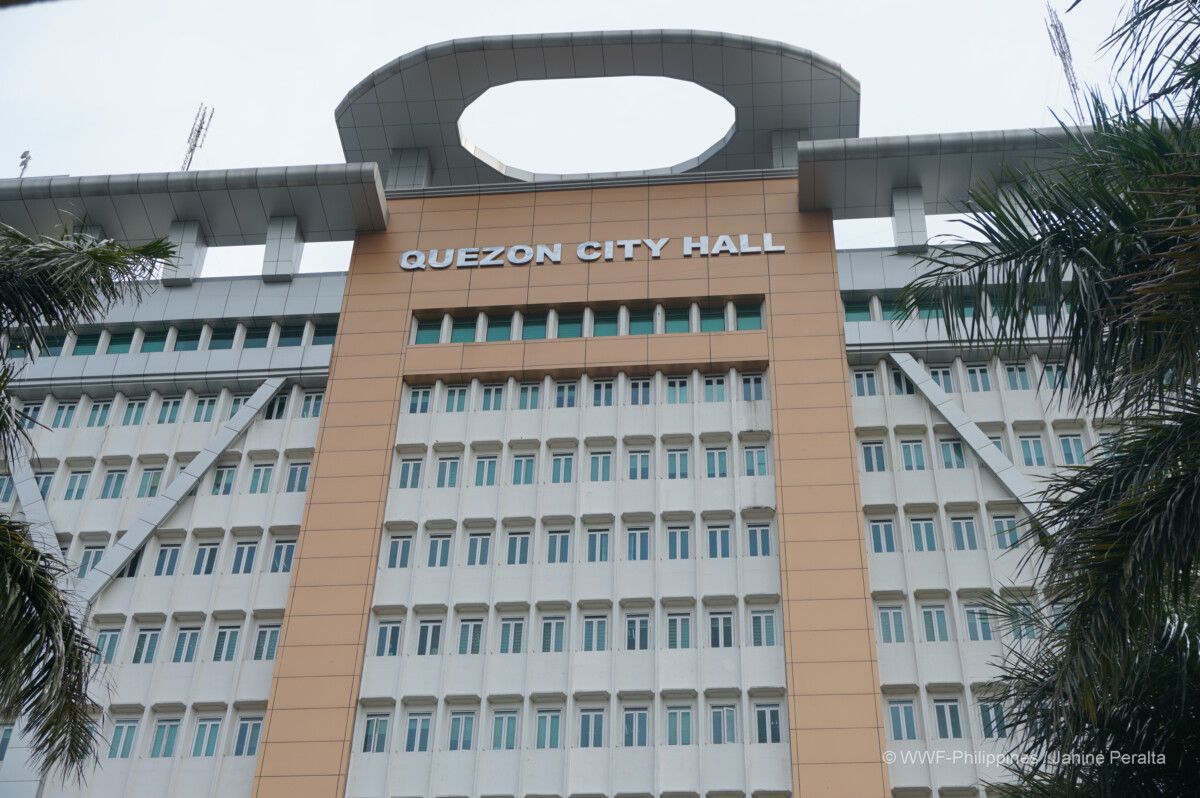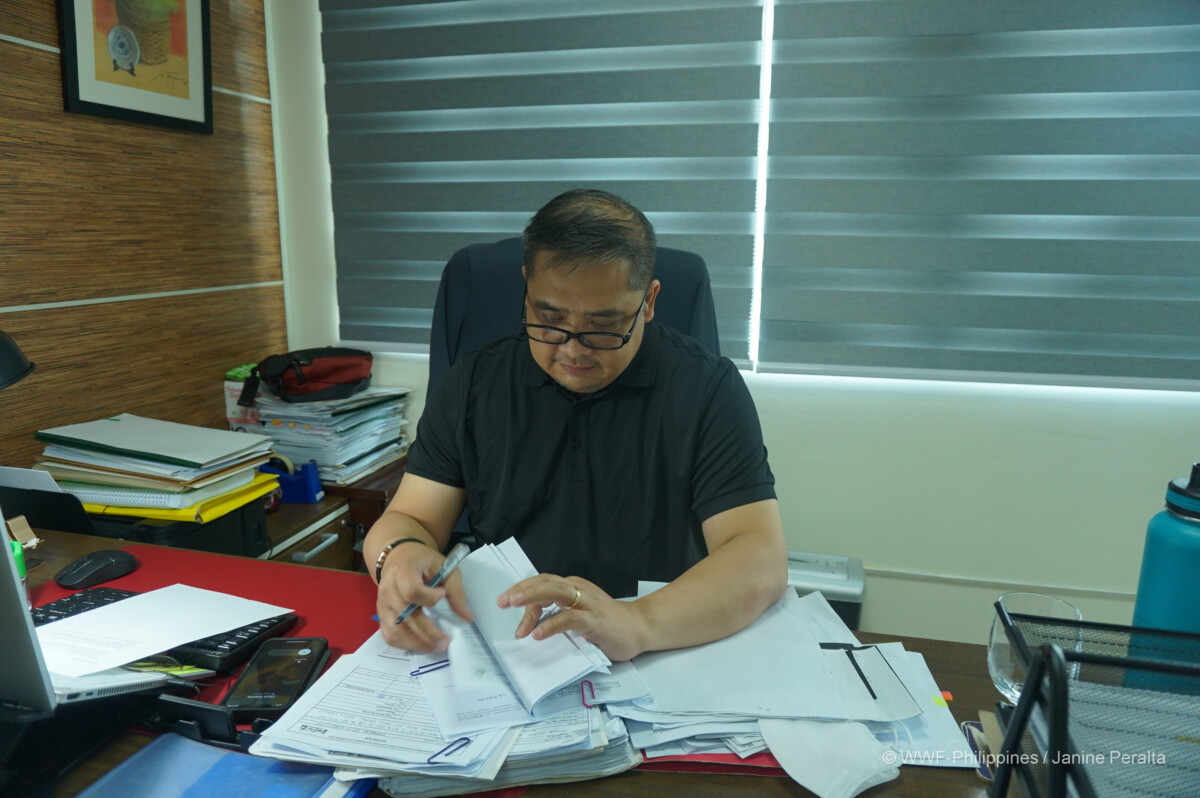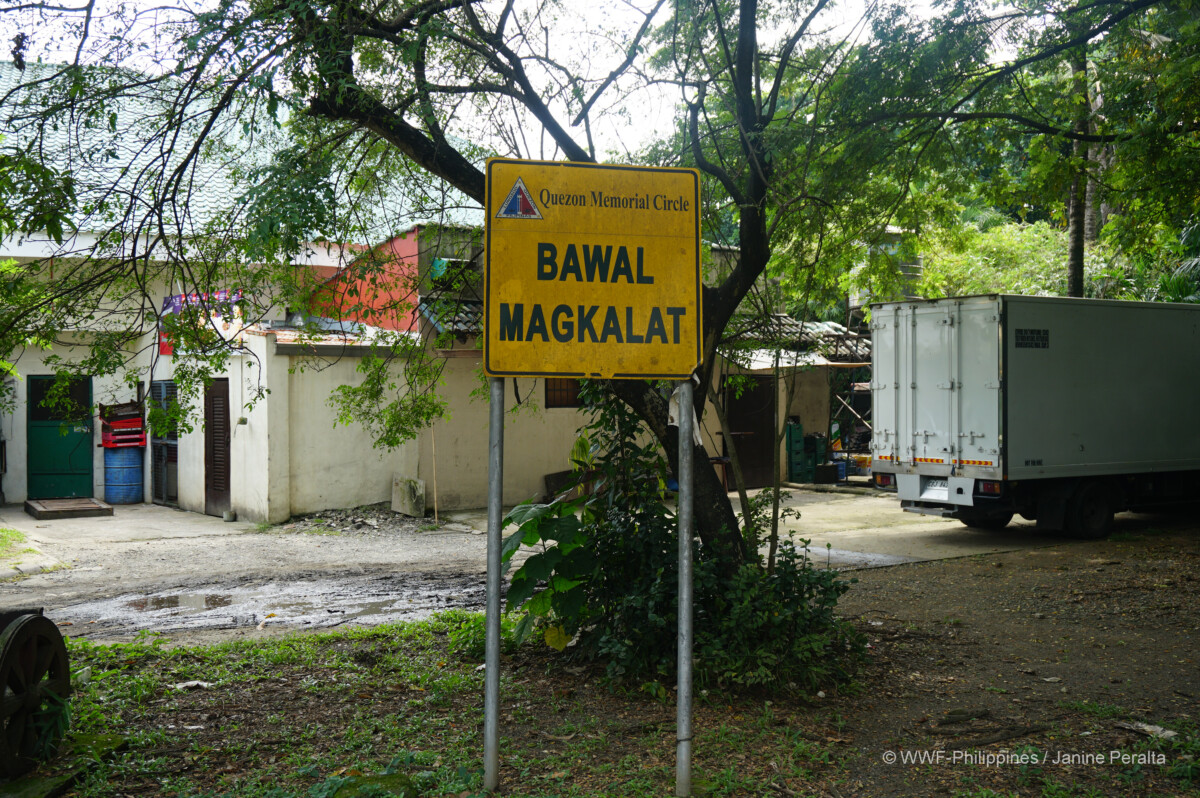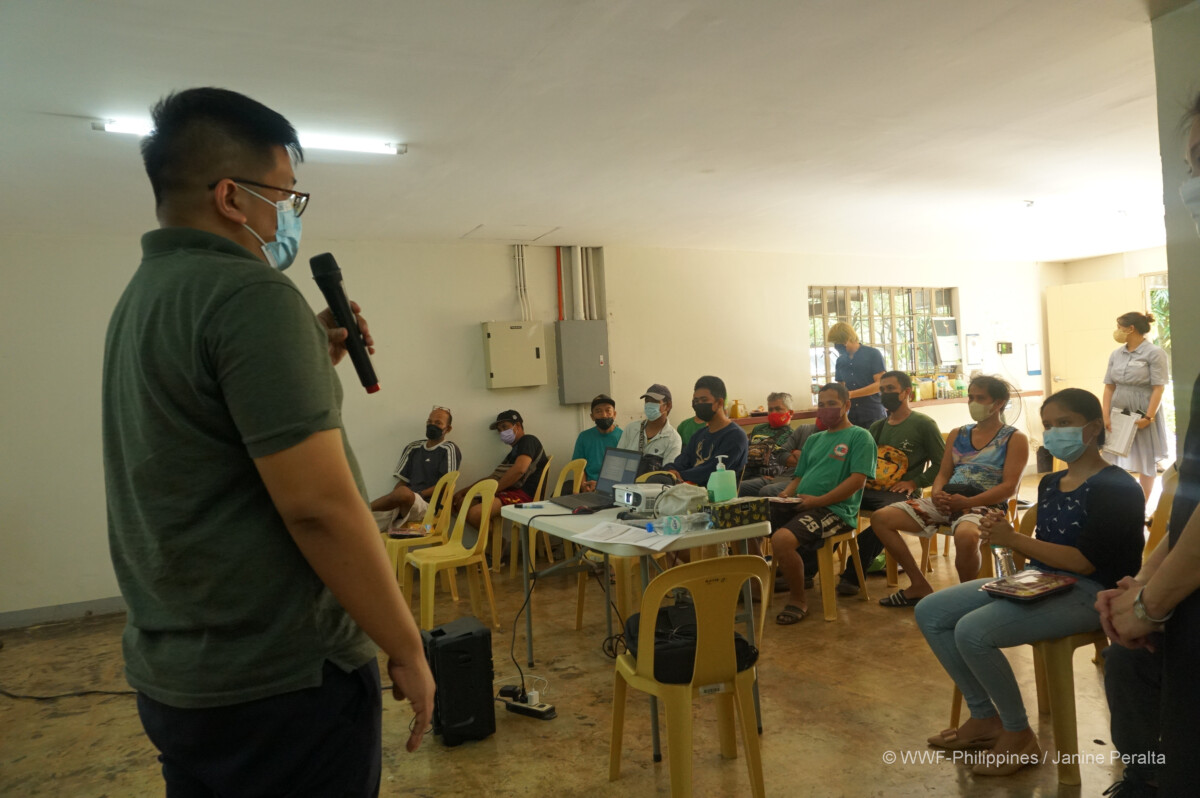Trace Your Share: Quezon City

The Department of Sanitation and Cleanup Works of Quezon City’s office is located in the Quezon City Hall.
“The EPR, having to create a standard that manufacturers can follow and redefine what it offers to consumers, [I believe it] will help our waste management a lot at the grassroots level,” said Richard Santuile, Officer-In-Charge of the Department of Sanitation and Cleanup Works of Quezon City (DSQC).
The Philippines now has an Extended Producer Responsibility (EPR) law that creates accountability on the part of big companies throughout the life cycle of their plastic packaging. Although the EPR law only requires big businesses to have an EPR system, the law should support various relevant sectors, including local government units (LGUs).
Quezon City is one of those LGUs and one of the largest cities in the country. Its DSQC handles waste collection in the city’s 142 barangays.
According to the department, the vast geographical area they cover poses a challenge in solid waste management.
“In our 142 barangays, there are barangays that can be considered small municipalities in size with populations just as large,” said Richard. “The volume of where people [come] to and from Quezon City presents a considerable challenge to our waste management effort.”
Representatives of the DSQC were among the participants of WWF Philippines’ EPR dialogue with the waste management sector on July 21, 2022 in Pasig City. There were 17 participants from nine local government units and waste management operators.
The dialogue captured insights from multiple stakeholders on the EPR law and the EPR system itself. The local government is a key stakeholder given that they monitor and evaluate the compliance of households and businesses to the city environmental codes and ordinances.
WWF aims to consolidate these inputs into toolkits that can guide policymakers in crafting the implementing rules and regulations of the EPR law. This toolkit, dialogues and a white paper with inputs from stakeholders are funded by the UN Environment Programme’s (UNEP) SEA circular project which seeks to inspire market-based solutions and encourage enabling policies to solve marine plastic pollution at the source.
Apart from funding, the project pushes for a human rights-based approach in the EPR scheme that will be implemented in the Philippines. UNEP works closely with WWF Philippines as the latter develops the toolkit and white paper that aims to communicate this approach while ensuring that all sectors are integrated into it.
City's woes

Richard Santuile is the Officer-In-Charge of the Department of Sanitation and Cleanup Works of Quezon City which oversees waste collection in all the households.
Quezon City has a population of 2.96 million people as of the latest report in 2020, making it the most populated of the country’s 33 highly urbanized cities. Of the country’s over 42,000 barangays, the second and third most populated are located in Quezon City: Commonwealth (more than 213,000 people) and Batasan Hills (more than 166,000 people).
Source: https://psa.gov.ph/population-and-housing/node/164811
The COVID-19 pandemic has particularly aggravated the city’s waste management struggle. The DSQC collects waste from households, and since the pandemic hit, there have been more people working from their homes. This led to more waste generated in these homes, making segregation and reduction even more difficult.
Beginning last year, Richard said the department had to double its trash collection schedules from three to six times a week.
“We are trying to get our communities and our constituents to adhere and to segregate even more actively and to improve on the pre-pandemic levels that we had,” added Richard.
However, one of the reasons why households and public areas are not able to segregate their waste is because there are no institutionalized standards on how to do so.

There are signs placed in public places around Quezon City, reminding people not to litter.
Setting standards
This is the case in the University of the Philippines (UP) Diliman campus in Quezon City.
“I think a good addition to the law is to set standards or guidelines on how to segregate waste, such as what categories to include. Because as of now, the guidelines differ in different areas,” said James Buño, Acting Director of the UP Diliman Environmental Management Office (DEMO), in Filipino.
WWF-Philippines also conducted an EPR dialogue with UP DEMO on September 12, 2022 at its office in Diliman, Quezon City. There were 16 participants from the office, including trash collectors and management staff.
The UP Diliman campus occupies 493 hectares and hosts not just school buildings, but residential areas as well. It is also a known public space where visitors can enter freely even if they are not students, staff or residents.
Its waste is supposed to be categorized as either recyclables, residual waste, food waste, or yard waste (leaves, branches, etc.). But in most cases, this is not followed, which is why collectors suggested integrating waste management education into the students’ curriculum.
“Maybe the approach should be to include waste management in the students’ curriculum, because as you know, students like to depend on janitors,” said Reynaldo Burce in Filipino. He is an administrative aide of UP DEMO and his work involves collecting and processing food and yard waste.

James Buño is the Acting Director of the University of the Philippines Environmental Management Office in Quezon City.
They also suggested incentives, such as discounts, that would benefit not just the obliged companies, but also households that would return recyclable packaging.
James said it would encourage people to engage in waste management efforts if they could directly feel the benefits of the system.
“Because we depend on households to segregate their waste, it would be better if the incentives can be felt at their level as well,” said James in Filipino.
A collective role
Overall, the goal of the law is to encourage businesses to reduce unnecessary plastics, explore alternative delivery systems for their products in the market, and ensure that the necessary packaging will not end up in landfills.
Richard from the DSQC noted that this is a “good” law, considering that current rules on segregation put the burden of responsibility only on consumers, even though producers themselves are the source of the commodities that are being used.
“One of the biggest problems is that the law on segregation is imposed or expected for end-users where manufacturers define what end-users purchase…so I believe that this is a law that will address this matter,” he said.
By addressing the source of the plastic packaging, consumers and the waste management sector would have less to segregate and less to throw in landfills.
“Manufacturers have looked too much at their bottom lines to the degree that it has affected what they have offered to their consumers and the EPR will hopefully reawaken our manufacturers into utilizing more sustainable, reusable materials,” added Richard.

Reynaldo Burce is among the administrative aides who attended the WWF Philippines’ EPR dialogue with the University of the Philippines.
A study by WWF Philippines found that Filipinos generate about 2.15 million metric tons of plastic per year of which only 9% is recycled while 35% ends up in an open environment.
With the EPR bill lapsing into law in July, the country aims to reduce plastic pollution by requiring big brands and businesses to recover a portion of their plastic packaging waste. Failure to do so would mean paying a fine worth millions of pesos. Further offenses would lead to them losing their business license.
The requirement is to reduce their plastic footprint by 20% in 2023 compared to the year before, 40% in 2024, increasing by 10% each year leading to 2028. Then in the years following 2028, the businesses must retain an 80% annual plastic recovery rate.
The EPR implementing rules and regulations should be drafted 90 days after the bill’s lapse into law.
“Waste management, segregation will be more manageable if producers offer to their customers materials that they can actually use after the commodities have been used up,” said Richard. ”So in the end they will make our lives easier and they will make that responsibility on waste management I think even more meaningful because now everyone has a role.”
About WWF-Philippines:
The World Wide Fund for Nature Philippines is an environmental non-government organization committed to create an impact on biodiversity protection and responding to the climate crisis -towards a safe and just recovery. WWF-Philippines works with a host of partners including national and local governments, to co-create inclusive, innovative, and interdisciplinary solutions that emphasize the role of science in the service of life.
WWF-Philippines' focus is on scaled solutions with our partners to match the enormity of the tasks required to address the urgent environmental challenges facing the present and next generations of Filipinos. Its mission is "to stop, and eventually reverse the accelerating degradation of the Philippine environment – to build a future where Filipinos live in harmony with nature."
For more information, please contact:
Ms. Czarina Constantino-Panopio
National Lead, No Plastics in Nature Initiative
cconstantino@wwf.org.ph
For media arrangements, please contact:
Ms. Chezka Guevarra
Assistant Manager for External Communications and Ambassador Programs
09276566436
cguevarra@wwf.org.ph
